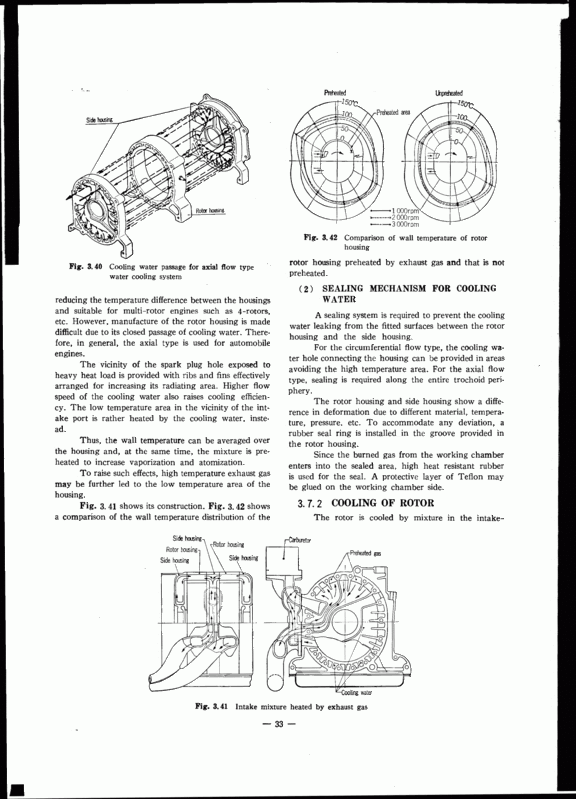 08-05-2012, 04:28 PM
08-05-2012, 04:28 PM
|
#50
|
|
Rotary Fanatic
Join Date: Feb 2008
Location: Slidell, LA
Posts: 191
Rep Power: 18
|
Quote:
Originally Posted by f1lthy

Barry, any more insight on this? Reading through a few things, I noticed using a bit of exhaust gas (through I assume reversion), a preheating of the rotor housing takes place, distributing thermal load and subsequently lowering housing surface temps. Their findings are interesting in that it drops temps about 20* c in the exact area in question... So is there a balance there that could be found to maybe increase the effects of this design?
f1lthy, I believe this is the Mazda research you were referring to.
The intake section is heated by exhaust gases but it is not EGR being reintroduced into the intake itself.
It also helps vaporize the fuel for a faster burn rate.

Also, should rotor face temps be considered? Could higher rotor face temps (which wouldn't be obviously apparent, being Iron, takes longer to reach higher temps, as well as resisting the destructive properties of heat. On top of being near impossible to measure accurately.) play a role in this? Sustained high rotor face temps (which are, as found by mazda, higher at the leading face) at this point in timing could play a distinct role in the housing temps, just by radiation?
Being that, by design, the rotors are cooled by oil AND intake air charge causes me to consider RICE RACING's opinion on the water injection to be evidence to support this.
Thoughts?
-Matt |
Mazda also did research on the rotor face temps. They used slip-rings for the multiple sensors embedded in the rotor. (Yamamoto '71 and '81)
We have natural EGR from exhaust port overlap. This is very detrimental to efficient burn-rate.
I need one more good housing to build a special anti-reversion experiment this winter.
Barry
|

|

|